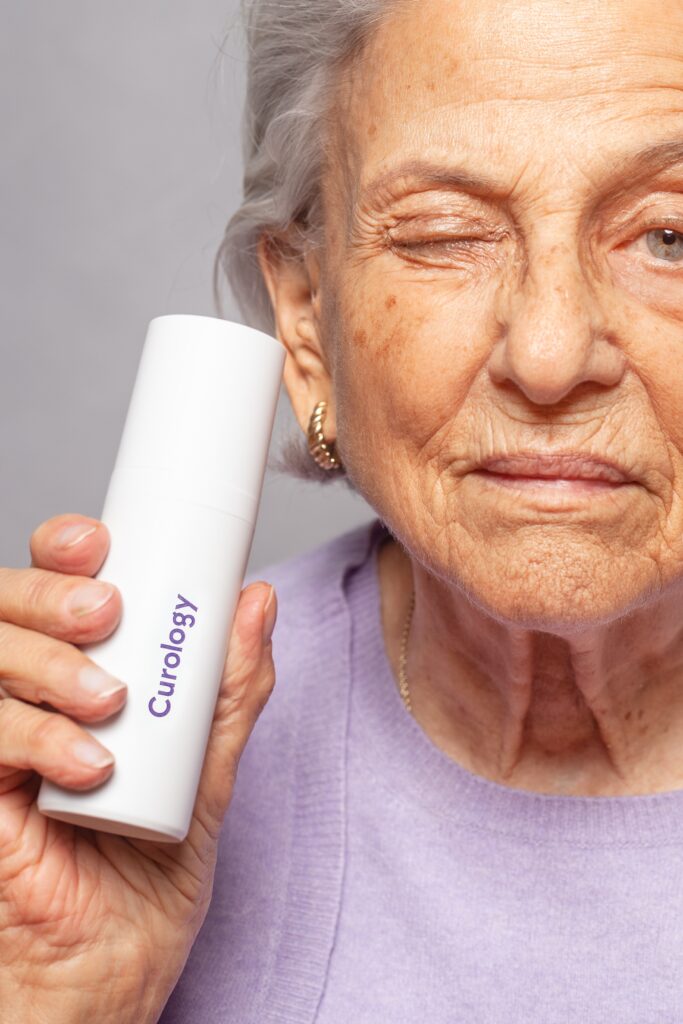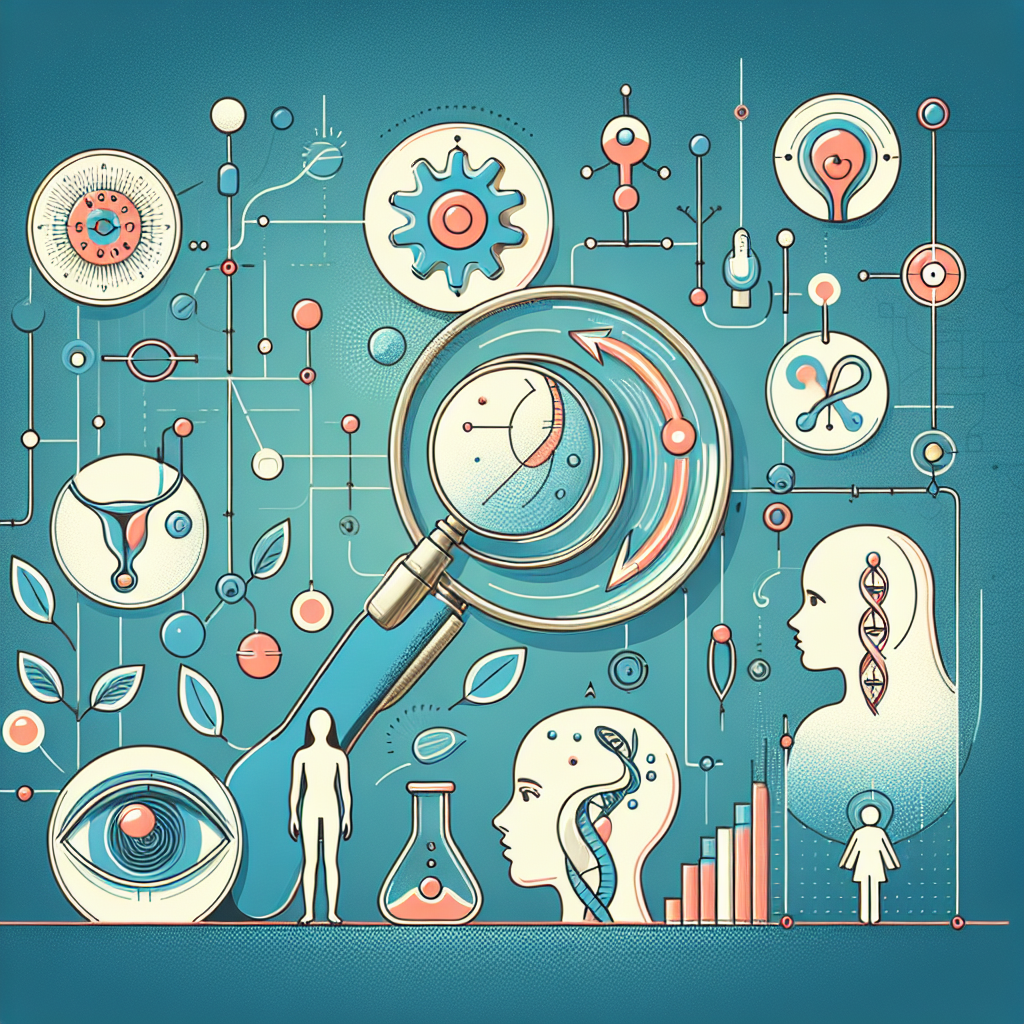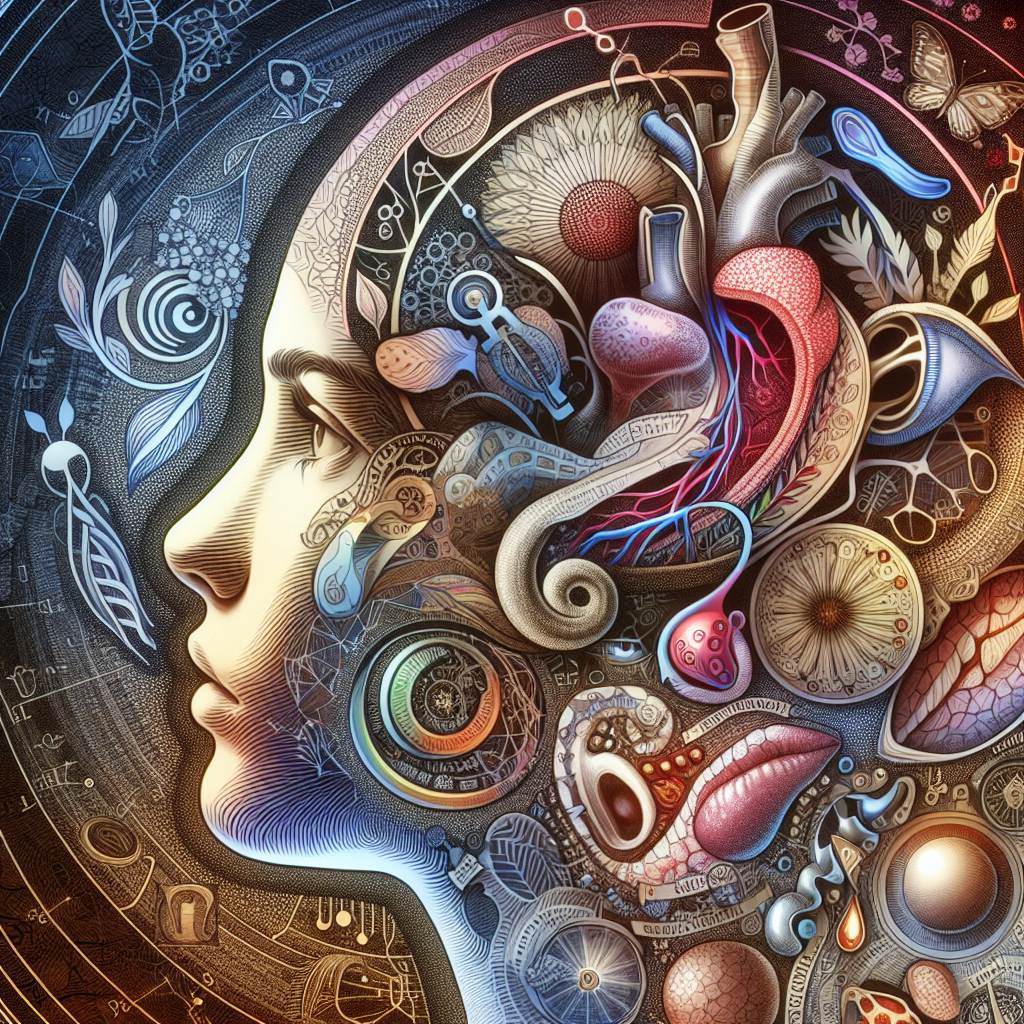Imagine a question that has probably crossed your mind at some point: What age does arousal start? It’s a topic that may make some feel uncomfortable, but it’s a natural part of human development. Exploring the early stages of sexual arousal can provide insights into our own experiences, as well as those of the people around us. This article delves into the fascinating world of human sexuality, shedding light on when and how arousal typically begins to manifest itself. Get ready to broaden your understanding and deepen your appreciation for the complexities of our bodies and desires.

Understanding Arousal
Definition of Arousal
Arousal refers to a state of heightened physiological and psychological activation that prepares an individual to respond to a situation or stimulus. It is characterized by increased heart rate, blood pressure, and respiration, as well as heightened attention and alertness. Arousal plays a crucial role in regulating behaviors, emotions, and cognitive processes, influencing our responses to various stimuli in our environment.
Importance of Studying Arousal in Different Age Groups
Studying arousal across different age groups is essential for understanding the developmental processes, societal influences, and psychological factors that shape our experiences of arousal. By examining arousal in various stages of life, we can gain valuable insights into the unique challenges and opportunities individuals face in each age group. This knowledge can inform interventions, treatments, and strategies to promote healthy arousal functioning and overall well-being.
Factors Influencing Arousal
Arousal can be influenced by a myriad of factors, including biological, psychological, social, and environmental aspects. Biological factors, such as hormonal changes and genetic predispositions, play a significant role in shaping arousal responses. Psychological factors, such as cognitive appraisal and emotional regulation, can also influence arousal experiences. Furthermore, social and environmental factors, such as cultural norms, family dynamics, and access to resources, impact the intensity and regulation of arousal. Understanding these multifaceted influences is vital in comprehending the complexities of arousal across different age groups.
Arousal in Infants and Toddlers
Development of Sensory Arousal
In infancy and toddlerhood, arousal primarily manifests through sensory experiences. As infants explore their surroundings, their sensory systems become activated, leading to a heightened state of arousal. Bright lights, loud noises, and tactile stimulation can all contribute to increased arousal levels in infants and toddlers. Through these sensory experiences, infants learn to regulate and modulate their arousal, which lays the groundwork for subsequent arousal development.
Early Signs of Arousal
Recognizing early signs of arousal in infants can help caregivers respond appropriately to their needs. Common signs of arousal in infants include increased body movements, widening of the eyes, vocalizations, and changes in breathing patterns. These signs indicate heightened physiological and psychological activation, suggesting that the infant is responding to their environment and experiencing arousal.
Factors Impacting Arousal in Infants and Toddlers
Several factors influence arousal experiences in infants and toddlers. The caregiver’s responsiveness, emotional availability, and ability to provide a calm and consistent environment play crucial roles in regulating infant arousal. Additionally, genetic factors, temperament, and the quality of interaction with the environment can all shape an infant’s arousal responses. Understanding these factors can aid in promoting healthy arousal development and facilitating optimal outcomes for infants and toddlers.
Arousal in Childhood
Emergence of Sexual Arousal
During childhood, sexual arousal begins to emerge, albeit in a non-sexual context. Children might experience feelings of physiological activation that they may not fully understand. It is important to differentiate between sexual and non-sexual arousal during this developmental stage and address any concerns or questions in an age-appropriate and supportive manner.
Factors Affecting the Onset of Sexual Arousal
Various factors can influence the onset of sexual arousal in childhood. Biological factors, such as hormonal changes associated with puberty, play a primary role in the emergence of sexual arousal. Psychological factors, such as cognitive development and self-awareness, also contribute to how children experience and interpret arousal. Additionally, social and cultural influences, including family dynamics, societal norms, and exposure to media, can influence children’s understanding and expression of sexual arousal.
Understanding Non-Sexual Arousal in Children
Apart from the emergence of sexual arousal, children also experience non-sexual forms of arousal. These can be related to excitement, anticipation, heightened enthusiasm, or emotional activation in response to various stimuli, such as engaging in play, participating in social interactions, or pursuing hobbies or interests. Recognizing and understanding these non-sexual arousal experiences is vital in supporting children’s emotional and cognitive development.
Arousal in Adolescence
Puberty and Sexual Arousal
Adolescence marks a significant period of physiological changes, including the onset of puberty. Hormonal changes during puberty lead to the development of secondary sexual characteristics and an increase in sexual arousal. Adolescents may experience these physiological changes alongside feelings of attraction, desire, and emotional activation, signaling the beginning of their sexual maturation.
Hormonal Changes and Impact on Arousal
Hormonal fluctuations, particularly the surge in sex hormones like testosterone and estrogen, greatly influence arousal experiences in adolescence. These hormones play a crucial role in the development of reproductive organs and the awakening of sexual desires. The interplay between hormonal changes, brain development, and social factors contributes to the complexity of adolescent arousal experiences.
Social and Environmental Factors Influencing Arousal in Adolescents
Adolescents are also greatly influenced by social and environmental factors when it comes to arousal. Peer relationships, cultural values, societal expectations, and media exposure can all shape adolescents’ understanding, expression, and regulation of arousal. It is important to provide adolescents with comprehensive education about arousal, consent, and healthy relationships to support their development and well-being during this crucial stage of life.

Arousal in Adulthood
Sexual Arousal and Sexual Response Cycle
In adulthood, sexual arousal plays a central role in intimate relationships and reproductive processes. The sexual response cycle, consisting of four stages – desire, arousal, orgasm, and resolution – provides a framework for understanding the physiological and psychological processes involved in sexual arousal. Each stage involves distinct changes in the body and mind, contributing to the overall experience of sexual arousal.
Psychological and Emotional Influences on Arousal
Psychological and emotional factors significantly influence arousal experiences in adulthood. Mental health, stress levels, relationship dynamics, and personal beliefs all contribute to the intensity and regulation of arousal. Positive emotional states, such as intimacy, affection, and feelings of safety, can enhance arousal, while negative emotions, such as anxiety or depression, can hinder it. Understanding the interplay between psychological factors and arousal is crucial for maintaining a healthy and satisfying sexual life.
Arousal Disorders and Dysfunction in Adulthood
Arousal disorders and dysfunction can occur in adulthood, impacting sexual satisfaction and overall well-being. Conditions such as hypoactive sexual desire disorder (HSDD), erectile dysfunction (ED), and female sexual arousal disorder (FSAD) can significantly affect individuals’ sexual experiences. It is important to address these disorders through a multidimensional approach, including medical intervention, psychological support, and open communication within relationships.
Arousal in Older Adults
Changes in Arousal with Aging
As individuals age, physiological changes can affect arousal experiences. Hormonal variations, decreased blood flow, and age-related health conditions can influence sexual arousal in older adults. However, it is essential to recognize that arousal remains a natural and valuable aspect of life at any age, and changes in arousal experiences do not diminish the potential for fulfilling sexual intimacy and connection.
Maintaining Healthy Arousal in Older Adults
To maintain healthy arousal in older adults, it is important to prioritize physical well-being, engage in open and honest communication with partners, and seek support from healthcare professionals when needed. Encouraging a positive attitude towards aging, fostering emotional connection, and exploring alternative forms of intimacy can also contribute to a fulfilling sexual life in older adulthood.
Common Challenges and Interventions for Arousal in Aging Populations
Common challenges in arousal for older adults include medical conditions, medications, and societal stigma surrounding sexuality in later life. It is crucial to address these challenges by providing comprehensive sexual health education, ensuring healthcare professionals are knowledgeable and sensitive to older adults’ needs, and establishing supportive environments that promote sexual well-being and healthy aging.

Gender Differences in Arousal
Biological Factors and Arousal
Biological factors, such as hormonal variations, brain structure, and genetic influences, contribute to gender differences in arousal experiences. Testosterone and estrogen levels play a central role in sexual arousal, with variations between males and females influencing desire, response patterns, and overall arousal experiences. Understanding these biological differences can foster empathy, promote effective communication, and support sexual well-being in relationships.
Cultural and Societal Influences on Arousal
Cultural and societal influences shape our understanding and expression of arousal, often leading to different expectations and experiences based on gender. Norms and expectations surrounding masculinity and femininity can impact individuals’ comfort levels, self-perception, and acceptance of their own arousal experiences. Recognizing and challenging these cultural influences is crucial in promoting inclusive and equitable attitudes towards arousal.
Understanding Gender-Specific Differences in Arousal
Recognizing and understanding gender-specific differences in arousal can help break down myths, stereotypes, and misconceptions surrounding sexuality. It is important to emphasize that arousal experiences vary widely among individuals, regardless of their gender, and that open and non-judgmental communication within relationships is key to promoting sexual satisfaction and well-being for all.
Environmental Factors and Arousal
Influence of Family and Parenting on Arousal Development
Family dynamics, parenting styles, and the quality of parent-child relationships greatly influence arousal development in individuals. Secure attachments, open communication about emotions and sexuality, and an overall supportive family environment can contribute to healthy arousal experiences. Conversely, negative or inconsistent parenting practices may hinder the development of healthy arousal regulation and impact individuals’ overall well-being.
Media, Technology, and Arousal
The media and technology play a significant role in shaping individuals’ understanding, expectations, and experiences of arousal. The portrayal of sexuality, hypersexualized content, and the availability of explicit material can influence arousal patterns and attitudes towards sexuality. It is crucial to promote media literacy, critical thinking, and responsible usage of technology to ensure individuals have accurate information and make informed choices about their own arousal experiences.
Education and Arousal Awareness
Comprehensive sexual education plays a vital role in fostering healthy arousal development and promoting informed decision-making. Providing age-appropriate information about arousal, consent, boundaries, and healthy relationships can help individuals navigate their own arousal experiences with confidence and understanding. It is essential to create educational environments that are inclusive, non-judgmental, and sensitive to diverse needs and experiences.

Arousal and Mental Health
Arousal and Anxiety Disorders
Arousal and anxiety are closely interlinked, as heightened arousal levels can contribute to the development and maintenance of anxiety disorders. Conditions such as generalized anxiety disorder (GAD), panic disorder, and post-traumatic stress disorder (PTSD) can be characterized by persistent or excessive arousal, leading to feelings of distress and impaired functioning. Effective treatment approaches, such as cognitive-behavioral therapy (CBT) and relaxation techniques, can help individuals manage arousal and reduce anxiety symptoms.
Depression and Arousal
Depression can impact arousal levels, often leading to a decrease in sexual desire and motivation. The impact of depression on arousal can vary across individuals and genders, and it is essential to approach the treatment of depression holistically, addressing both emotional and physical aspects of arousal. Collaborative care involving mental health professionals and healthcare providers can help individuals regain a healthy balance of arousal and improve overall well-being.
Impact of Trauma on Arousal Regulation
Experiencing trauma can profoundly impact arousal regulation and sexual function. Trauma survivors may struggle with hypervigilance, dissociation, or hyperarousal, leading to difficulties in experiencing pleasurable arousal or engaging in intimate relationships. Trauma-informed care, including trauma-focused therapies and creating safe and supportive environments, is crucial in helping individuals heal and rebuild healthy arousal experiences.
Arousal Research and Ethical Considerations
Ethical Considerations in Studying Arousal
Research involving arousal requires careful ethical considerations to ensure the well-being and privacy of participants. Informed consent, confidentiality, and protecting vulnerable populations, such as children and survivors of trauma, are of utmost importance. Researchers must adhere to ethical guidelines and regulations to ensure the validity and integrity of their findings while prioritizing the safety and autonomy of their participants.
Challenges in Conducting Arousal Research
Studying arousal poses various challenges due to its sensitive and personal nature. Recruiting participants, obtaining accurate self-report data, and minimizing biases are some of the challenges researchers face when conducting arousal research. Additionally, cultural and societal taboos surrounding sexuality can hinder the collection of comprehensive and representative data. Addressing these challenges requires collaboration among researchers, practitioners, and ethical review boards to improve the quality and impact of arousal research.
Future Directions in Arousal Studies
As our understanding of arousal continues to evolve, there are promising avenues for future research. Exploring the impact of technology on arousal, investigating the role of cultural factors in diverse populations, and identifying effective interventions for arousal disorders are areas that warrant further investigation. Advancements in research methodologies, interdisciplinary collaborations, and a holistic approach to studying arousal will contribute to a more comprehensive understanding of arousal across different age groups, genders, and cultural contexts.


